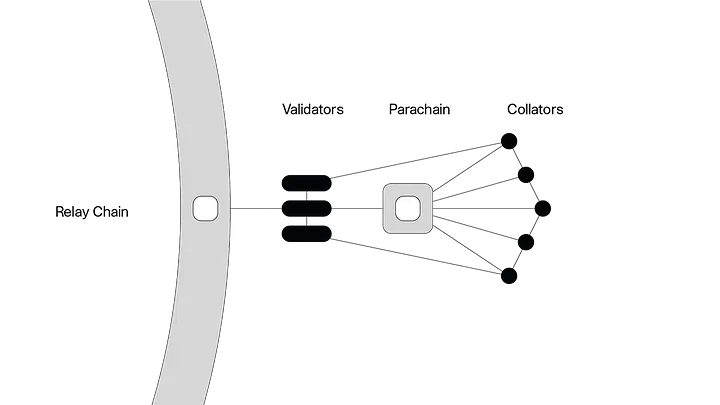
2024-8-9 22:7:34 Author: hackernoon.com(查看原文) 阅读量:3 收藏
In a blockchain architecture, if the computational load on the native chain can be minimized and parallel chains can post their data in a compressed manner via consensus, in such a situation, it is possible to defeat the blockchain trilemma. The Polkadot ecosystem does that through parachains.
What Are Parachains?
Parachains are independent heterogeneous blockchains having their own governance structure; however, they inherit the security of the greater Polkadot ecosystem by connecting through the relay chain.
So far, the parachain auctions have completed 20 successful rounds with the likes of Coinversation, Bifrost, Origin Trail, Polkadex, Litenty, unique Network, and Phala to name a few securing their slots. The total dots locked stands at 131,367,081.94 with more than 180,828 network participants.
This data is enough to look at Parachains again in 2024 and analyze how might leverage it for your dApp.
So, How Do Parachains Work: A Recap
They work by allowing applications to build their own environment with features like a separate custom block time, fees for transactions, a reward mechanism for mining, and a governance system. So, typically you can have your own blockchain with unique rules and the means to communicate with other parachains but with the added advantage of inheriting the security of the Polkadot ecosystem. How?
Because the collators on the parachain observe all the events and publish the same to the Relay chain validators that bolt that information on the Polkadot ecosystem to inherit its security. Doesn’t that impact the scalability of the Polkadot ecosystem?
How Does the Polkadot Parachain Impact Scalability and Decentralization?
In order to make the Polkadot ecosystem highly scalable and decentralized, there has to be a medium that takes the computational load on the Polkadot ecosystem to a different layer, and only submits recursive proofs of the ledger on the main chain to inherit its security.
Parachain does that by processing the transactions on its own environment and only submitting proofs of those transactions in a block on the relay chain, aka the mainchain of the Polkadot ecosystem.
In this manner, the Polkadot ecosystem is relieved of the burden of processing every event that is happening in its parallel connected network and only processes a combined snapshot of the event.
However, there’s a little infrastructural drawback nonetheless to acknowledge. Within the parachain ecosystem, every parachain is bound to a single validator node of the Relay chain due to the coretime dedicated time slot while completing the above process.
Which, to an extent, dilutes absolute scalability because if the coretime has no transaction to process, it would ideally remain non-functional for a specific time period due to its dedicated nature.
How Does the New Polkadot Ecosystem 2.0 Solve This To Achieve Limitless Scalability?
Polkadot 2.0 ecosystem introduces elastic scaling. The purpose of elastic scaling is to make abstract rigid scaling and replace the same with relative scaling.
How does this happen? Through an upgrade called multicore per parachain instead of single core and agile coretime. This makes the existing cores answerable to on-demand requests by nodes requiring validation for an hour, a day, a week, or a fortnight to validate their blocks instead of a dedicated timeframe.
In this way, paving the way for elastic scaling to occur on the Polkadot ecosystem for every project based on a need-based situation instead of a provision-based one.
As a result, it is possible for all the projects to experience hyperelastic scalability because they would make use of all the existing coretime, which would have otherwise remained idle in Polkadot 1.0 as shown in the above image.
In addition to this, there’s asynchronous backing also to simultaneously view and include all the transactions in a queue instead of viewing them as separate transactions altogether and delaying the validation process.
This occurs through erasure-coded chunks and included elements, where all non-inclusive transactions are randomly gossiped through commitments to all the validator nodes of the Relay Chain before they could even happen, which significantly reduces the time of finality from 12 seconds to 5 seconds.
There are more updates to ship in 2024 according to Polkadot’s roadmap. We’ll keep a closer look at what they are bringing to make Polkadot Parachains relevant to other scaling solutions.
如有侵权请联系:admin#unsafe.sh


